Lorelei Hawkins on Her Youth and Struggles in the Downtown Eastside
Lorelei Hawkins (b.1951) was forced to start a new life in the DTES at only 17 years-old after her adoptive mother abandoned her. Here, she shares her story of survival and of negotiating her Aboriginal identity.
– interview by Erin Grant
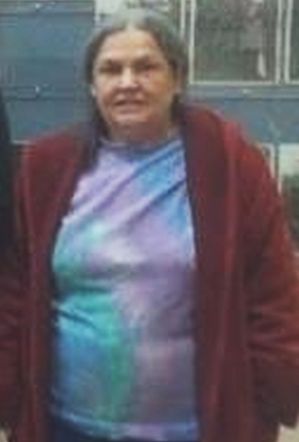
When I was about 17 years old, I actually got ditched in the DTES, which is going to sound strange to people. I was living with my Irish/British adoptive parents in a small town in the Okanagan when my mom decided to have me packed up and moved to the YWCA in between the DTES and the Granville Strip. I had broken curfew one night—not by too much—so she ordered my father to drop me off the next morning at the door of the Y. He gave me some money to survive, and I was on my own after that. Nowadays 17 doesn’t sound that young, but back then the age of consent was 21, and my adoptive parents were supposed look after me until I became of age. I could tell that he wasn’t happy with how this whole thing was being done, but nonetheless he was really strict about telling me that my adoptive mom was very angry so I couldn’t ever come back to the house and that if I returned I would be charged.
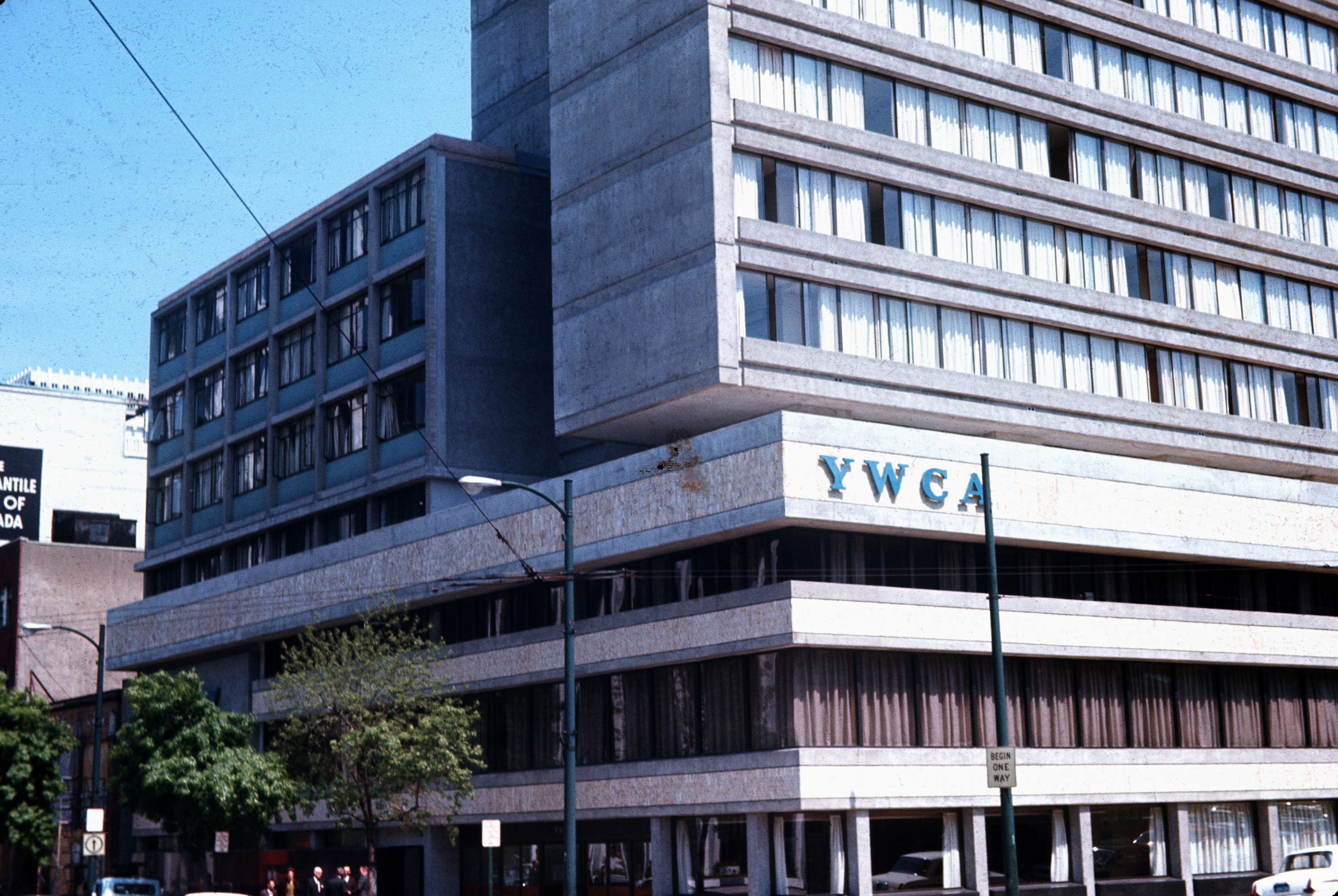
Image credit: Vancouver Planning department, Copyright City of Vancouver
Even though I was scared, there was this child inside of me that was really defiant and went “yeah I’m okay, I’ll survive, and don’t ever call me because I don’t want anything to do with her again”. I didn’t feel that way about him, but it was certainly my feelings about her. She’s in Vancouver now; her family is one of the founding families, so she must have grown up with a certain sense of status and entitlement.
Despite the culture at the time, she made all the decisions in the household. I used to think my adoptive father was a bit of a wimp, but he was ahead of his time. He let me go fishing and hunting with the boys and he would never say “no, you can’t do it because you’re a girl”. He was very encouraging. She, on the other hand, was very strict and had a cold style of parenting. Sending me to the Y wasn’t the first time she had me shipped away for “misbehaving”. When I had failed grade 7, she sent me off to private school under the assumption that I simply wasn’t capable of achieving anything more and she didn’t want to have to deal with me. This was contrary to the school psychologist who told her that my poor performance was because I was bored and had stopped participating.
I was ahead of my peers and even turned to other outlets like drama. At my school, I put on a play mostly by myself. I produced it, did the sets, the costumes, and ended up having to play the lead role because no one else could memorize the long speech. I wanted to do it well to show that arts and drama should be part of the Grade 7 curriculum. This didn’t impress my adoptive mother even though she was actually a drama teacher! Growing up I guess I always had a love for art. In fact, I won my first scholarship in grade one but they wouldn’t give it to me because I was too young. When I was in grade six I did a course called “Painting in the Park” in Vancouver. I won a spot for 3 years and then the art teacher decided I needed to move into something where I could develop further.
Around the same time, my adoptive mother was enrolling me in private school. She was moving to Vancouver and renting a place from an Aboriginal woman named Charmian Johnson who did pottery. She had converted her carport into this big, beautiful studio. Charmian recognized that I was Aboriginal and took me out to the carport to throw pottery for the first time. She put me on a manual wheel and taught me pottery and everything because she could tell that I had a lot of frustration and pent up anger and art was a good way to deal with it.
I continued with art in private school and I have to say I had some excellent teachers. I ended up learning how to play piano with Dorothy Fraser, a concert pianist in Osoyoos. Dorothy had a beautiful house with a grand piano that she let me play. After she heard me playing, she gave me some great advice. One of the main things she taught me was to slow down and read the music, because I had a habit of just memorizing everything.
Agnes Sutherland was another important teacher of mine. She was the artist who painted the Red Barn. She instructed me to get rid of my eraser, grab a big fat pencil and to just draw my strokes and be bold. Like Charmian, she got me back on track in a gentle way. Later on, in private school, I had an artist burnout. It was right after I won another contest.
I actually lived year-round at the private school. I was told that I had to get high marks because they were spending lots of money on me. At the time I didn’t know that it was my money they were spending. In the second year, I ended up living with the reverend at the school. They had a little room down in the basement that they fixed up. I had a dog that adopted me, so I was allowed to walk around in the hills and out in nature and was able to avoid spending too much time pent up in the school. I ended up getting high marks in my classes and I actually finished with Grade 13 which was equivalent to the first year of college.
Life in the Downtown Eastside
There were a lot of Aboriginal people living in the DTES when I came here in the late 1960s as a teenager. You ended up being sort of a gang. The thing about gangs is that not only is it about protection, security and safety, but you end up being like family. You really learn and care about each other and it gives you the family you don’t have.
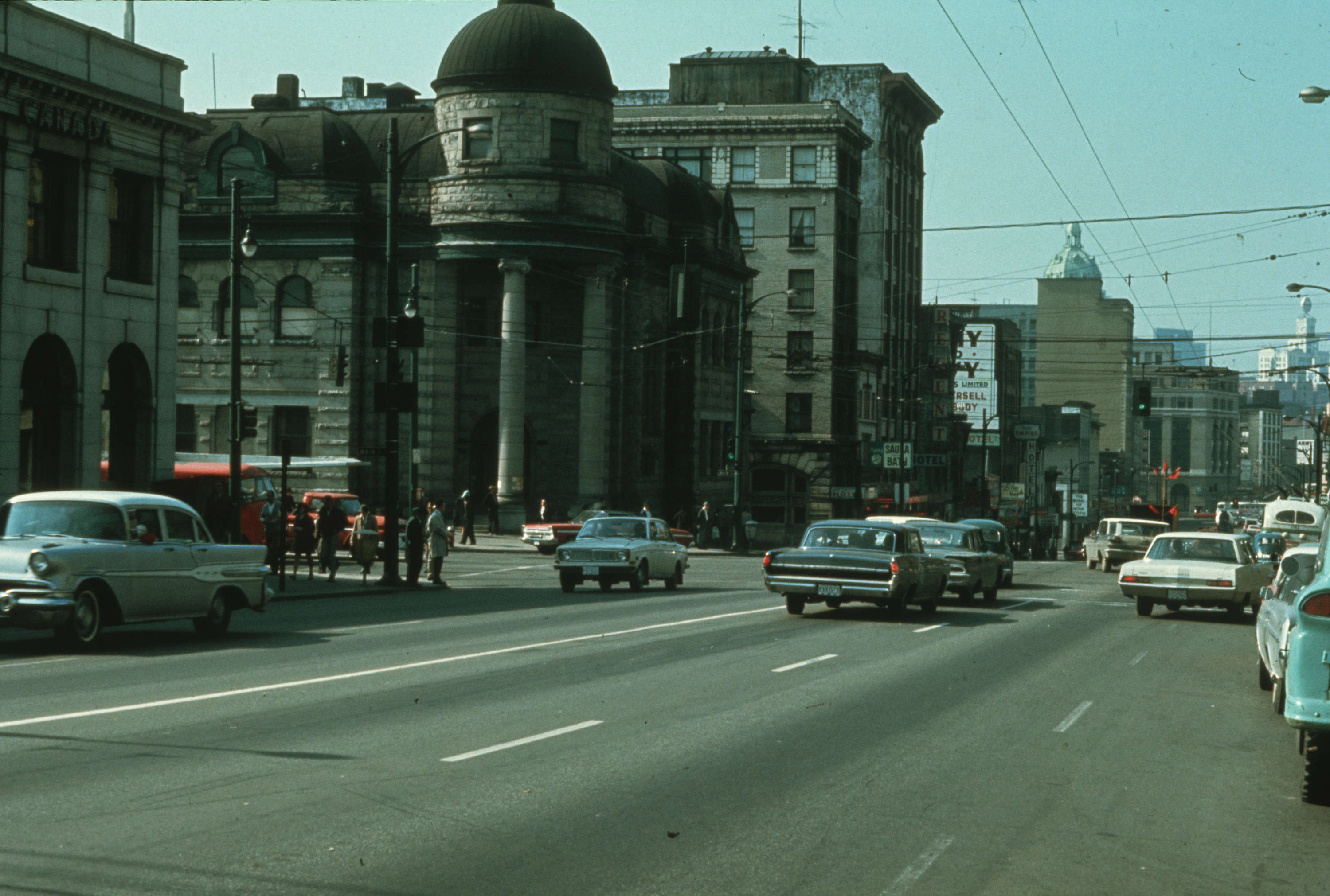
Image credit: William Eadington Graham, Copyright City of Vancouver
The Y was a strange life; totally different than today. If you were a young woman and lived at the Y you couldn’t go anywhere unescorted. You couldn’t have people up to your room either; instead, they had to meet you in the lounge. You were supervised, and the guests were checked out by the staff. They were very protective, and it was a safe space to be in. Even though we technically weren’t supposed to go into the bars, we did anyways, but we still needed to go in through a separate entrance and to be chaperoned by a gentleman.
Soon after I arrived in Vancouver, I started getting street-involved. At that time, there were bikers and bike gangs all around and I got involved with that scene because I had a lot of repressed anger. I didn’t feel a lot of pain. I grew up in the foster care system where you don’t cry, you don’t do anything wrong, you try to act as perfect as possible so that people keep you.
Later on, I moved into another women-only apartment where there were mostly working women living there. It was fully furnished with a mix of private and shared rooms. There were curfews there too, and they would always check up on where you were going.
After that, I moved into a hotel down on Granville, and that was kind of my turf. We would come down to Hastings which was seen as less classy than Granville, even back then. It had to do with the fact that we were uptown and they were downtown. Downtown was more for the hoodlums and street kids. Often we would come down for the White Lunch, a cafeteria-style lunch place. It was a good place to eat. On Granville we would eat at the Aristocratic, one of the main restaurants. Coffee houses started to pop up, and that was interesting since cafes are such a big thing right now, but they weren’t always as ubiquitous. Coffee houses had entertainment like open-mic night and poetry reading. They became really popular with college and university kids who decided they were hip places to hang out. After that, dancing and clubs really started taking off.

Image credit: Vancouver Transportation Division, Copyright City of Vancouver
I worked for a while in the clubs as a dancer. I didn’t mind that. I looked really underage, which became an asset, and I have the type of personality where men don’t get away with much. I may be small—5’1” at my tallest—but I can stand up for myself. In comparison to the streets, clubs were mild. Dancing was a release for me; it still is, although I don’t do a lot of it now because my grandchildren think I’m too old and get embarrassed. I really miss the supper clubs. They had reasonably-priced meals and really good entertainment. Some of the people I got to see when I was working at the clubs were just amazing—BB King, Dorothy Moore—all that’s gone. Clubs are more fast-paced now.
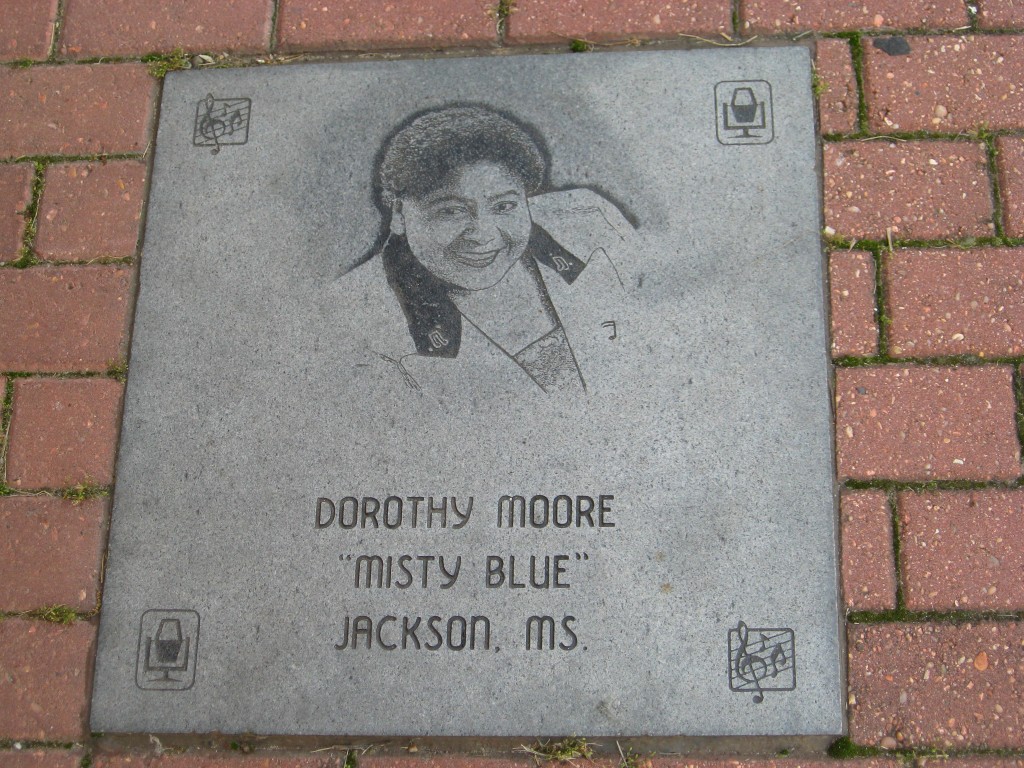
Image credit: Randall Kooistra, CC, Flickr
After a while, I got involved in the YWCA’s Big Sister program which had just started up. They were trying to prevent other girls who were headed in the wrong direction from becoming street-involved and they knew I had some knowledge of that. The streets were hard back then, but not like today. They were much more black and white; there was a very strong code and that made it a lot safer. Yes, there were drugs and alcohol and bars and pubs starting up, but it wasn’t as rampant as it today. People were usually doing speed or heroin. For a while, there was LSD, but the long term addicts were taking speed and heroin. Now with some of the other drugs like the crack and crystal meth you see people are more wired and having a harder time. There’s seems to be a real push in the community and in policy for letting people do whatever they want and the belief that we shouldn’t tell people what to do. Even though people with addiction issues are more socially accepted, as a parent I have concerns with that, having gone through it with my blood children. I’m not about to leave my child with anyone who’s about to do harm to them and sit back and watch. I’m more hands-on with my family, and in the community I’m known to be quite outspoken and quite strict.
Like today, there was also a lot of poverty in the neighbourhood. For example, when you went out by The Only, there were places where the men would be standing in soup lines. But they weren’t seen as undeserving as people are now. It was the time. That’s not to say it wasn’t difficult for them. Men were supposed to be the breadwinners back then. Women still weren’t very involved in the paid workforce. They were mostly at home taking care of the kids and doing unpaid domestic work.
I didn’t ever want to be married in my life and I didn’t like the idea of it. In spite of that, I did end up getting married to a very persistent man who wouldn’t take no for an answer. He kept on asking me and finally he got his way because welfare backed him up. He thought I would be turning 21 in the summertime, so the marriage was approved by welfare, but one of my daughters did the accounting of my marriage certificate, and it turns out I was only 19 and a half. So I was underage, and it was forced. He went and got the papers, then came back and said “if you don’t marry me, I’ll end up in prison”.
When I was getting married, I didn’t know what nationality to put on my paperwork so I wrote “don’t know due to adoption, please check and verify”. When the paperwork came back it stated “North American Indian” and in brackets “Cherokee”. Nobody stopped me and said “you’re actually Indian and, if you get married, you could be giving up your rights as per the Indian Act amendment of 1951”. His mom was really upset that I was Aboriginal. Later, when I was doing some paperwork for him, I found out that his mom was actually Aboriginal too. I guess in her mind she had married a white Irish man so she was white Irish too.
We ended up having two children. I had one child within a year and then, believe it or not, welfare and the hospital sterilized me without my consent after I had my second child. They thought that the second child might be from a different man because my husband and I had separated and I planned on getting a divorce. Divorce was a real big hassle in those days. When I filed for divorce, they actually let him file against me so it would be him claiming a divorce on me for adultery even though I hadn’t even committed adultery. With adultery, you automatically lost your children because you were seen as an unfit mother, and not a proper woman. No one would ever date you. That’s why I have a lot of adoptive children. I had originally planned on having four boys and four girls.
Contacting her Birth Mother
My second granddaughter was born with a rare genetic coding, so the Children’s Hospital did testing on her and her mother, and then me. I had an open file, so they decided to follow my family line and contacted my birth mom who was alive and well, even though welfare told me she had died. My birth mother was really brave and had to go home and tell her children that there was an older sister looking for her and that there was this whole history of two children who were taken away from her. She came down to meet me from the Okanagan, and then I went up to meet the entire family. She had been in the Okanagan the whole time looking for me, living right in the town I had grown up in. They had changed my name though, which she hadn’t realized they could do, and are supposedly not allowed to do. There’s more open adoption now, which is great, both for the child and for when they decide to have their own families. It’s important to know your background and your history in your family line because it helps you get grounded as a person.
My birth mother and my birth father are both Aboriginal. My birth mother didn’t actually know that my father was Aboriginal. It was kind of hidden. Basically the whole idea was to “pass” because being Indian wasn’t seen as a positive in society. My adoptive family knew that my brother and I were both Aboriginal. We were actually adopted together, which rarely happens. When they took children away, they would usually make sure that siblings were all separated. They were sent off to different provinces or states and even over to England, the British Isles, and Hawaii. On the paperwork it said that I passed because I have fine features, so my adoptive mother figured that if I grew up in her family as part of the culture then I would become mainstream. My brother still walks that path. According to him, he’s Irish with a little bit of Indian.
My experiences really shaped the work I became involved with later on in the 80s. I worked on Bill C31 from 1980-1985, then started writing about all the lost children who were taken away and adopted out during the same time as residential schools were running. I also ran a Medicine Wheel perspective program. We worked with the courts to help make sure Aboriginal children were released into more traditional settings. That work really paved the way for what is now called the Gladue Rights.
I continue to do a lot of work around the DTES. I got involved with Raymur when I was pregnant with my first child living down the street at the McLean’s Project. I actually remember when the Militant Mothers of Raymur came together to fight for their children in the early ’70s. That was inspiring. One of the groups I was working with recently was trying to take credit for the breakfast programs in the schools, and I said “No, we didn’t do that. It was the Militant Mothers who pushed for that”. The breakfast programs are still going.
I have a lot of empathy for the Aboriginal children who never had proper parenting and never had roots. I also have empathy for the Aboriginal parents, especially young mothers nowadays who have people from different organizations coming and lecturing them on how to be a proper parent. These are often people who haven’t even raised children themselves. We need to start doing programs that are empowering and are culturally relevant.
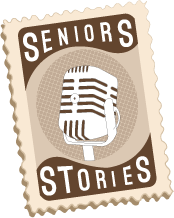
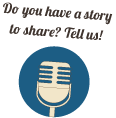


Leave a Reply